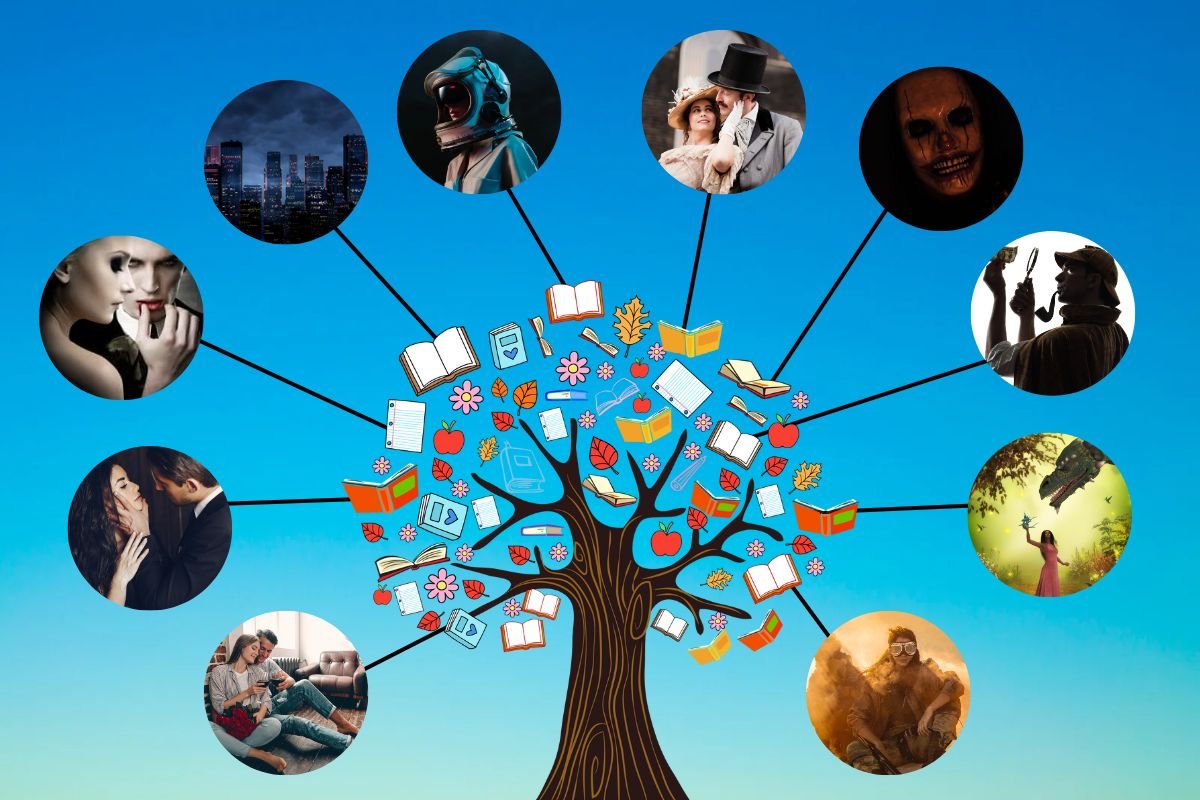World Building:
Creating a Place Your Characters Will Never Want to Leave (Or Will Want to Escape From)…
Hello, bookworms! Today, we’re going to talk about the wonderful and wacky world of world building. We’re going to look at the differences between building worlds for different genres. Because a contemporary romance novel is going to have very different world building requirements than a dystopian thriller. So, let’s dive in, shall we?
First up, contemporary romance. Now, you might think that world building for a contemporary romance would be straightforward. After all, it’s set in the real world, right? Kind of. Usually in the world of contemporary romance, everything is just a little more perfect than it is in real life. The sun shines, the birds sing, and there’s never any traffic. Even if it’s set in a city, things just seem a little easier than in real life. You’d never know the protagonist is suffering internally or has a dark secret they’re hiding behind a smile.
And let’s not forget about the coffee shops and bookstores. There is usually an adorable café or independent bookshop, with owners who are devastatingly handsome or wonderfully quirky, and they always know the character’s name and favorite coffee order or hold aside books they think they’ll enjoy. So just remember everything is better or more convenient than it is in real life, except for the problems of the characters, which are always way worse than anyone you know.
How about some dark romance? This is where things get a little complicated, because you’re dealing with a world that takes place in the ‘real world’ but still has to feel dangerous and unpredictable. In a dark romance, the setting is often just as important as the characters themselves, and you’ll need to create a world that feels gritty and raw.
One approach is to focus on a specific location or environment that reflects the darkness and complexity of the story. Maybe your characters live in a bustling city where one of them is a billionaire and the other struggles to keep food on the table. They usually meet by chance and become enamored with each other, even if they act like they hate each other. Often, the billionaire is male and has to save the struggling female from some horror in their life (an abusive ex, or the looming threat of homelessness, or a mafia hitman who is after her because she knows too much).
Another key element of world building in dark romance is to create a sense of moral ambiguity. In these types of stories, the lines between good and evil are often blurred, and characters are forced to make difficult choices in order to survive or save the protagonist whom they secretly pine for. You’ll need to create a world where morality is subjective, and the consequences of actions are often unpredictable. Because who doesn’t love a morally gray character? I know I do!
Next up, paranormal romance. This is where things get a little fun because you get to stretch and twist so-called reality into something a little different. In the world of paranormal romance, werewolves and vampires are real, and they’re probably going to fall in love with your protagonist. So you need to create a world where it’s believable that supernatural creatures can exist without the rest of the world noticing. Maybe they all live on a remote island, or there are magical wards set around their territory to keep pesky humans out, or maybe they’re just great at hiding in plain sight (a.k.a. not sparkly). Whatever you do, don’t forget to include plenty of moonlit forests, growling noises, and rivalries.
Moving on to urban fantasy. This is where the lines between the real world and the supernatural world start to blur. In an urban fantasy novel, you need to create a world where magic and monsters coexist with the mundane. Maybe there’s a secret society of witches who run the government, or maybe there are portals to other dimensions scattered throughout the city. And of course, there has to be a hero or heroine who is just discovering their own magical powers, and they are reluctantly drawn into a battle against some ancient evil threatening to reveal the supernatural to the human world or the bad guys want to destroy or enslave the humans. No matter what the protagonist is fighting against, when world building for urban fantasy, it’s best if the world is full of secrets, and almost nothing is what it seems.
Science Fiction: In science fiction, you’re dealing with technology that doesn’t exist yet, so you need to create a world that feels plausible and consistent. Whether you’re imagining a utopian future or a dystopian one, you’ll need to consider things like advanced weaponry, space travel, and artificial intelligence. And don’t forget to include plenty of futuristic slang, cultural norms, and unique problems for the characters to overcome like everyone wearing the same outfit and being referred to as a number, or the only food is tasteless goop that provides the essential vitamins and minerals needed to survive, or machines rule the world and have enslaved humans. Sci-Fi takes a lot of planning and creativity, but as far out as it can get, it should still be relatable.
Historical Fiction: In historical fiction, you’re typically dealing with real-world settings and events, so you need to do your research. You’ll need to create a world that feels authentic and accurate to the time period you’re writing about. This means considering everything from fashion to politics to the way people spoke to the societal structure. But remember, you’re still writing a story, so you can take some creative liberties as long as you’re staying true to the essence of the time period.
Horror: In horror, you’re creating a world that’s designed to scare your readers. This means you need to consider the setting and atmosphere. Whether you’re writing about a haunted house or a creepy forest, you’ll need to create a world that feels unsettling and ominous. Flickering lights, creaking stairs, wolves howling in the distance, or a clown in a sewer (I hate clowns!). And don’t forget to include plenty of jump scares and terrifying beasts, which can be human… some of the scariest monsters (fictional or real) have been humans.
Mystery/Thriller: In mystery and thriller novels, you’re creating a world that’s full of twists and turns. You need to create a world that’s believable enough for your readers to get invested in the mystery, but also mysterious enough to keep them guessing. If the reader figures out the story before they are invested, there’s no point in reading the book. This means including plenty of red herrings, plot twists, and unreliable narrators.
Ah… high fantasy. This is where you get to create an entire world from scratch. There are no rules, no boundaries, and no limits to what you can imagine. Want your world to be populated by dragons and unicorns? Go for it. Want your characters to speak a made-up language with its own grammar and syntax? Knock yourself out. The sky’s the limit (or is it?), my friends. Just make sure you have a solid magic system and a detailed history for your world, or your readers will get confused.
Finally, dystopian fiction. This is where things get really bleak. In a dystopian novel, the world is usually a post-apocalyptic hellscape where everything is terrible and nothing makes sense. Maybe there’s been a nuclear war, or a pandemic that killed a huge percentage of the population or turned them into zombies! Or maybe something happened that took out the world’s electricity, leaving the world in the dark ages (OMG no Wi-Fi!). The important thing is that the world is broken, and the characters have to find a way to survive. So when world building for dystopian fiction, just remember: everything is terrible, and there’s no hope. But hey, at least you can make up some cool slang for your characters to use.
So there you have it, folks. A brief guide to world building for different genres. Just remember, no matter what kind of world you’re building, the most important thing is to make it relatable and immersive. And if all else fails, just throw in a giant space squid. Kidding, kidding (unless that actually fits with your story, in which case, go for it!). But in all seriousness, world building is one of the most exciting and rewarding aspects of writing fiction. It can allow you to create entire universes from scratch and gives you the freedom to explore new ideas and concepts.
Of course, there’s no one ‘right’ way to approach world building. Every writer has their own methods and techniques that work best for them. Some writers prefer to start with a map or a timeline, while others like to focus on characters first and let the world build itself around them.
Ultimately, the key is to find a process that works for you, and to remember that the world you create should serve the story you’re telling. Whether you’re writing a romance novel set in a charming small town, or a high fantasy epic with an intricate magic system, the world you create should always feel real and engaging.
Until next time, happy reading and/or writing!!

